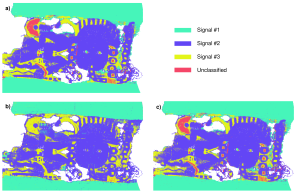
A practical workflow to capture and process hyperspectral images in combined VNIR-SWIR ranges is presented and discussed. The pipeline demonstration is intended to increase the visibility of the possibilities that advanced hyperspectral imaging techniques can bring to the study of archaeological textiles. Emphasis is placed on the fusion of data from two hyperspectral devices. Every aspect of the pipeline is analyzed, from the practical and optimal implementation of the imaging setup to the choices and decisions that can be made during the data processing steps. The workflow is demonstrated on an archaeological textile belonging to the Paracas Culture (Peru, 200 BC - 100 AD ca.) and displays an example in which an inappropriate selection of the processing steps can lead to a misinterpretation of the hyperspectral data.